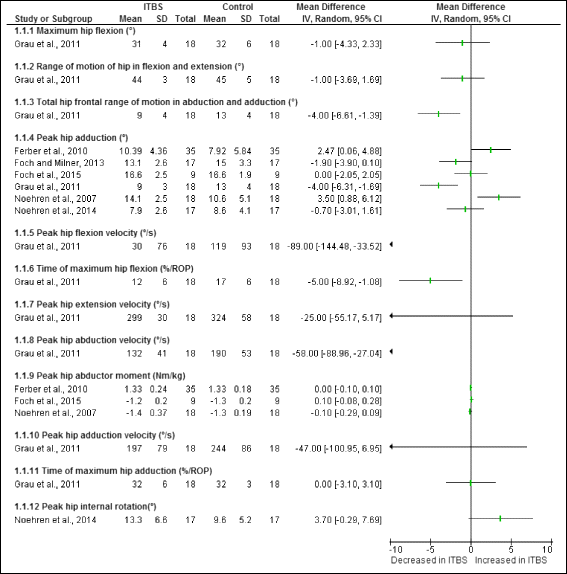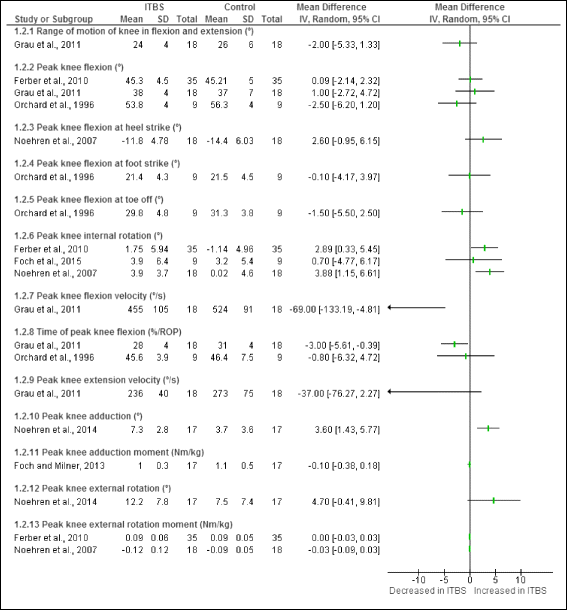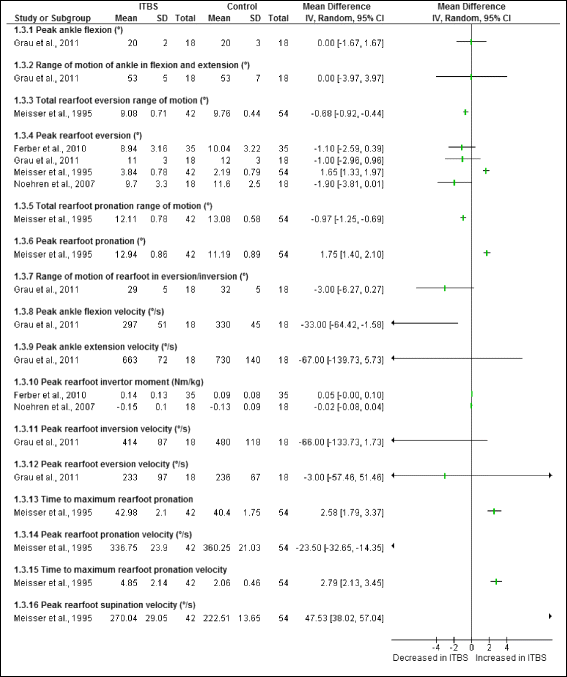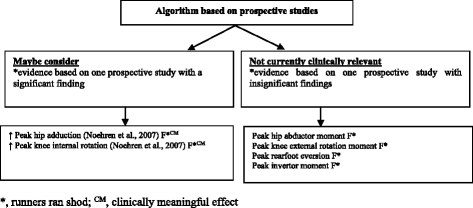Biomechanical risk factors associated with iliotibial band syndrome in runners: a systematic review
- PMID: 26573859
- PMCID: PMC4647699
- DOI: 10.1186/s12891-015-0808-7
Biomechanical risk factors associated with iliotibial band syndrome in runners: a systematic review
Abstract
Background: Iliotibial band syndrome is the second most common running injury. A gradual increase in its occurrence has been noted over the past decade. This may be related to the increasing number of runners worldwide. Since the last systematic review, six additional papers have been published, providing an opportunity for this review to explore the previously identified proximal risk factors in more detail. The aim of this systematic review is thus to provide an up to date quantitative synthesis of the trunk, pelvis and lower limb biomechanical risk factors associated with Iliotibial band syndrome in runners and to provide an algorithm for future research and clinical guidance.
Methods: An electronic search was conducted of literature published up until April 2015. The critical appraisal tool for quantitative studies was used to evaluate methodological quality of eligible studies. Forest plots displayed biomechanical findings, mean differences and confidence intervals. Level of evidence and clinical impact were evaluated for each risk factor. A meta-analysis was conducted where possible.
Result: Thirteen studies were included (prospective (n = 1), cross-sectional (n = 12)). Overall the methodological score of the studies was moderate. Female shod runners who went onto developing Iliotibial band syndrome presented with increased peak hip adduction and increased peak knee internal rotation during stance. Female shod runners with Iliotibial band syndrome presented with increased: peak knee internal rotation and peak trunk ipsilateral during stance.
Conclusion: Findings indicate new quantitative evidence about the biomechanical risk factors associated with Iliotibial band syndrome in runners. Despite these findings, there are a number of limitations to this review including: the limited number of studies, small effect sizes and methodological shortcomings. This review has considered these shortcomings and has summarised the best available evidence to guide clinical decisions and plan future research on Iliotibial band syndrome aetiology and risk.
Figures













References
-
- Khaund R. Iliotibial band syndrome: A common source of knee pain. Am Fam Physician. 2005;71:1473–5. - PubMed
Publication types
MeSH terms
LinkOut - more resources
Full Text Sources
Other Literature Sources
Miscellaneous

